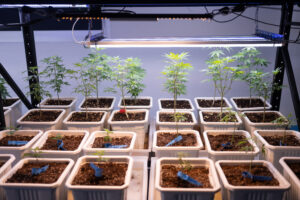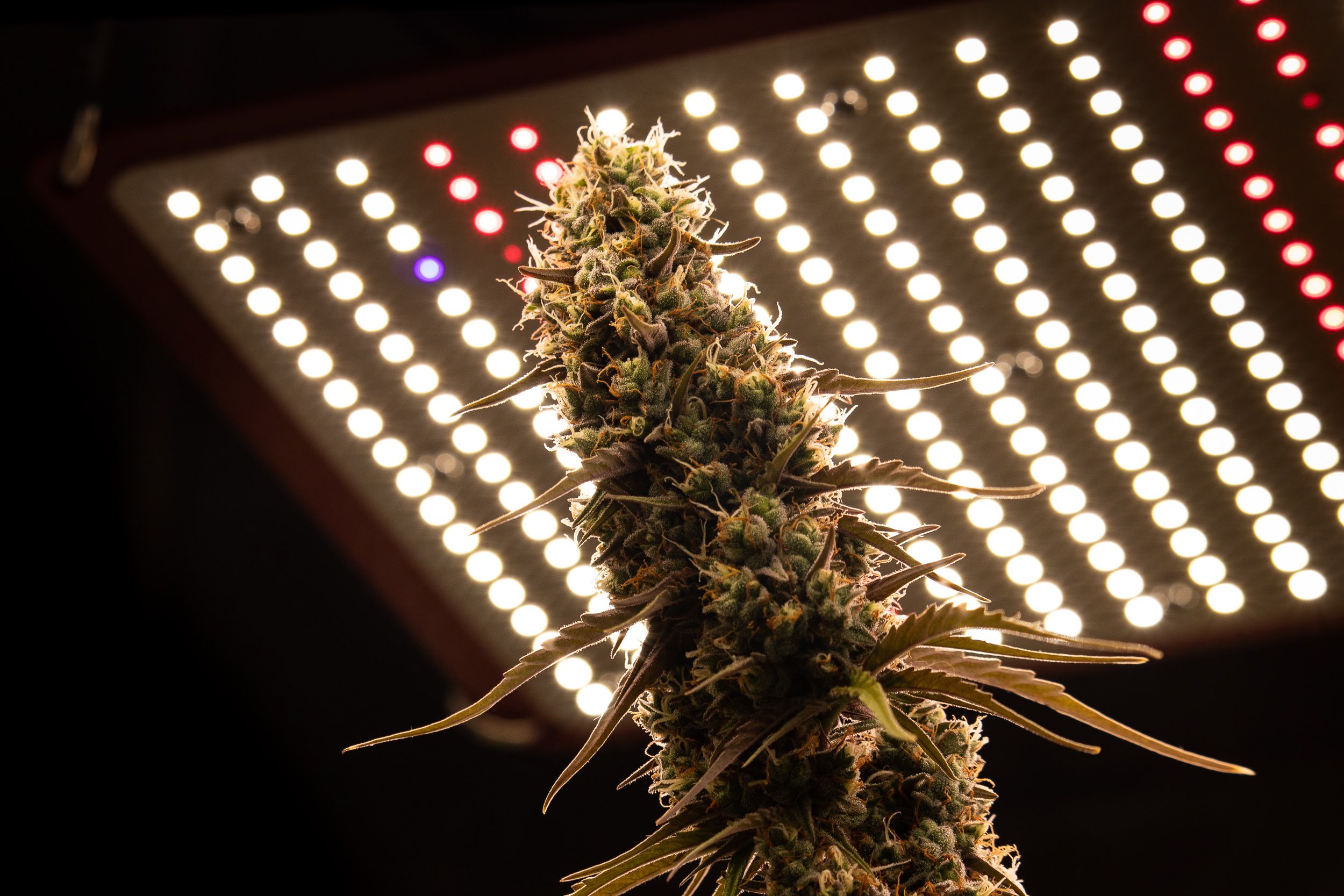
Lighting is a critical factor in cannabis cultivation, directly influencing plant growth, health, and yield. As growers strive to optimize their setups, understanding and implementing advanced lighting techniques can make a significant difference in the quality and quantity of their harvests. Whether you’re using LED, HID, or fluorescent lights, mastering the nuances of lighting can help you achieve superior results and unlock the full potential of your plants.
In this guide, we delve into the sophisticated aspects of lighting for cannabis cultivation. From fine-tuning light schedules to optimizing spectrum and intensity, we’ll explore tips and tricks to maximize your grow operation’s efficiency. Whether you’re a seasoned grower looking to enhance your techniques or a beginner eager to learn the ropes, these advanced strategies will provide you with the knowledge to take your cultivation to the next level. Let’s shed some light on how to grow the best cannabis possible!
Table of Contents
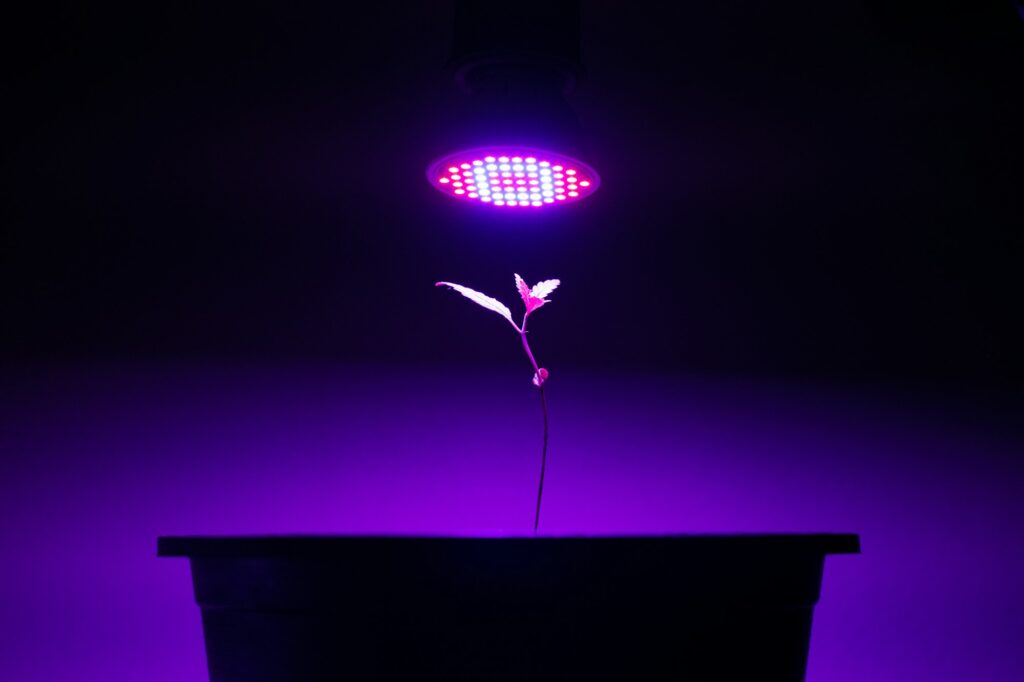
Advanced Lighting Techniques for Maximum Growth
1. Light Layering
- Concept: Utilize different types of lights at various heights and angles to mimic the sun’s natural movement and intensity throughout the day.
- Application: Combine overhead LED lights with side-mounted fluorescents to ensure light reaches all parts of the plant, including lower foliage, promoting even growth and reducing the risk of disease.
2. Dynamic Spectrum Adjustment
- Concept: Adjust the light spectrum based on the plant’s growth stage, providing blue-dominant light for vegetative growth and red-dominant light for flowering and fruiting.
- Application: Use programmable LED systems that allow you to change the light spectrum and intensity throughout the day or according to the plant’s lifecycle, simulating natural environmental changes.
3. Photoperiod Manipulation
- Concept: Control the length of day and night to trigger flowering or vegetative growth in photoperiod-sensitive plants.
- Application: Employ timers to artificially extend or shorten the day, tricking plants into flowering or staying in the vegetative stage as desired.
4. Pulsed Light Techniques
- Concept: Provide light in pulses, rather than continuously, to potentially increase photosynthesis efficiency and reduce energy consumption.
- Application: Use advanced LED setups that offer pulsed lighting options, mimicking the intermittent nature of natural sunlight through clouds and promoting more efficient light use by the plants.
5. Supplemental UV Lighting
- Concept: Introduce UV light to enhance plant colors, and flavors, and potentially increase resistance to pests and diseases.
- Application: Incorporate UV-A or UV-B lights in moderation during specific growth stages to stimulate stress responses in plants, leading to increased secondary metabolite production.
Implementing Advanced Techniques
Implementing these advanced lighting techniques requires a bit of experimentation and observation. Start small, adjusting one variable at a time, and monitor your plants’ responses closely. Documenting changes in growth, health, and yield can help refine your approach, leading to a tailored lighting strategy that maximizes the potential of your indoor garden.
By embracing these advanced lighting techniques, you’re not just growing plants; you’re engaging in a sophisticated dance with light, orchestrating conditions that encourage your plants to express their full genetic potential. It’s a journey of discovery, pushing the boundaries of indoor gardening, and unlocking new levels of growth and productivity.
Exploring specific lighting setups tailored to different plant types allows us to optimize our indoor gardens for a variety of green inhabitants. From sun-loving tomatoes to shade-thriving ferns, each plant has unique requirements that can be met with thoughtful lighting design. Let’s break down some example setups that cater to the diverse needs of our plant friends.
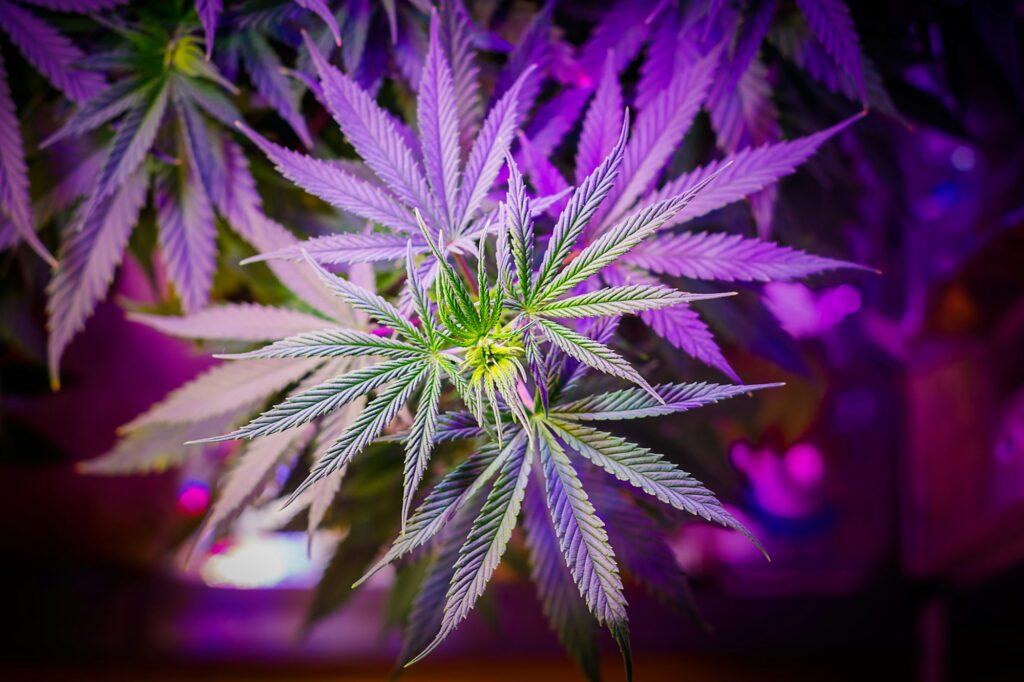
Tailored Lighting Setups for Diverse Plant Types
For High Light Plants: The Sun-Lovers’ Haven
- Plants: Tomatoes, peppers, succulents, and most flowering plants.
- Setup: Use a combination of LED or HID lights placed directly above the plants, ensuring they cover the entire growing area evenly. These lights should be powerful enough to mimic direct sunlight, with a PPFD of at least 600-800 μmol/m²/s for optimal growth.
- Tips: Position the lights about 12-24 inches (30-60 cm) above the plants, adjusting as they grow to prevent scorching. A 16-hour light/8-hour dark cycle simulates summer daylight, promoting vigorous growth and flowering.
For Medium Light Plants: The Balanced Brightness Zone
- Plants: Herbs (like basil and cilantro), dracaenas, and orchids.
- Setup: Fluorescent T5 or compact fluorescent lamps (CFLs) work well, offering bright but not overly intense light. LEDs set to a medium intensity can also be effective. Aim for a PPFD of 200-400 μmol/m²/s.
- Tips: Keep lights positioned 18-36 inches (45-90 cm) above the plants. An even 12-hour light/12-hour dark cycle will support steady growth without overtaxing the plants.
For Low Light Plants: The Gentle Glow Corner
- Plants: Ferns, pothos, ZZ plants, and peace lilies.
- Setup: Low-intensity light sources like T5 fluorescent lamps or dimmed LEDs are ideal. These plants thrive under a PPFD of 50-150 μmol/m²/s, resembling the dappled sunlight of a forest floor.
- Tips: Place lights further away from the plants, around 24-48 inches (60-120 cm), to mimic shaded conditions. A shorter light period, around 8-10 hours of light and 14-16 hours of darkness, aligns with their low-light preferences.
Considerations for All Setups
- Monitoring: Regularly check your plants for signs of stress (e.g., yellowing leaves, stretching, or burn spots) and adjust light intensity and distance as needed.
- Rotation: Rotate your plants periodically to ensure even light exposure, promoting balanced growth.
- Reflective Surfaces: Use reflective materials around your growing area to maximize light efficiency, ensuring no photon goes to waste.
By customizing your lighting setup based on the specific needs of your plants, you create an environment where each can thrive according to its natural inclinations. Whether basking in intense light or flourishing in a subtler glow, your indoor garden will reflect the care and attention to detail you’ve invested, showcasing a lush, vibrant collection of plant life.
As we reach the culmination of our journey through the enlightened world of plant lighting, it’s clear that the light we provide our indoor gardens is much more than just a substitute for sunlight. It’s a vital tool that, when used thoughtfully, can transform our indoor spaces into lush, productive, and vibrant ecosystems.
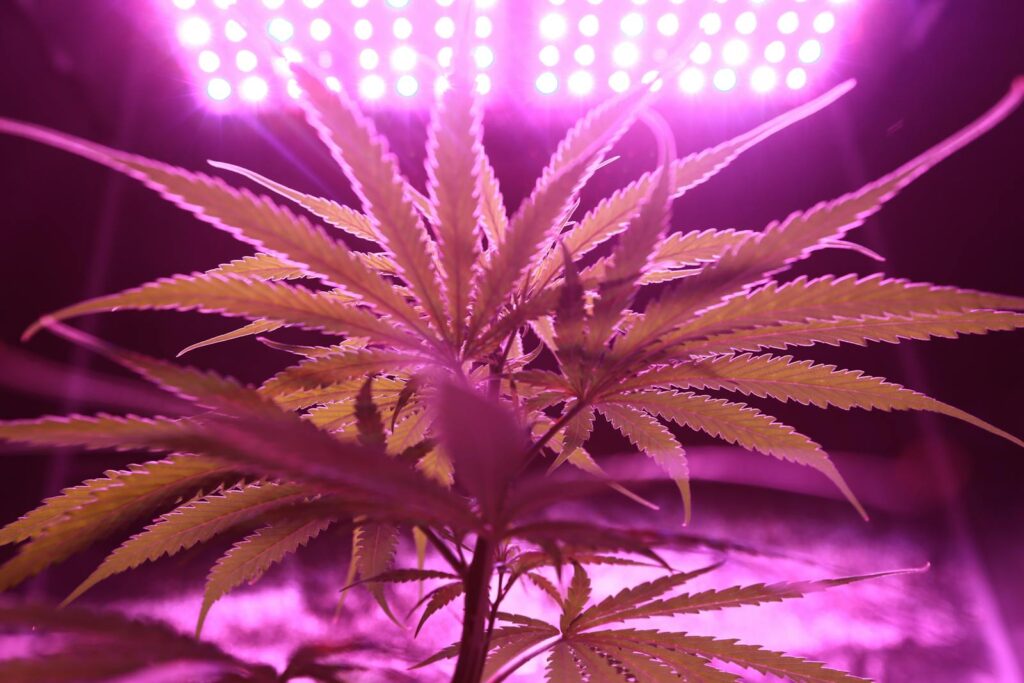
Conclusion: A Bright Future for Your Indoor Garden
Understanding and implementing the right lighting for your indoor garden is not just about ensuring your plants survive; it’s about helping them thrive. From the basics of the light spectrum and types of grow lights to advanced techniques for maximizing growth, we’ve explored how light is the lifeblood of indoor gardening.
Whether you’re a seasoned indoor gardener or just starting to explore the possibilities of plant care, remember that light is a powerful ally in your quest for a greener home. Embrace the science, experiment with new techniques, and always aim to create the perfect conditions for your plant friends.
Let There Be Light!
Now that you’re armed with knowledge and inspiration, it’s time to look at your indoor garden with new eyes. Assess your current lighting setup, consider the needs of your plants, and don’t be afraid to experiment with new approaches. Remember, every plant is unique, and finding the right lighting balance may take time and patience.
- Review Your Setup: Take a moment to evaluate the lighting conditions in your home. Are there areas where natural light can be better utilized? Could certain plants benefit from a different type of grow light?
- Embrace Technology: Consider investing in advanced lighting options, such as LED lights with adjustable spectrums or timers to automate light cycles. These tools can make it easier to provide your plants with the optimal light conditions they crave.
- Join the Community: Share your experiences and learn from others by joining online forums, social media groups, or local gardening clubs. The indoor gardening community is a vibrant place to exchange tips, tricks, and stories.
Your journey with plant lighting is just beginning. As you tweak, adjust, and learn, your indoor garden will respond with growth, vitality, and beauty. Let your curiosity and care guide you, and remember, in the world of indoor gardening, light truly is life.
Mastering advanced lighting techniques is a game-changer for cannabis growers aiming to maximize their yield and quality. The right lighting setup not only boosts plant growth but also enhances cannabinoid and terpene production, leading to more potent and flavorful buds. Whether you’re experimenting with LED, HPS, or a hybrid system, understanding how to fine-tune your lighting can elevate your grow operation to professional levels.
For a holistic approach to cannabis cultivation, it’s crucial to pair the right lighting with the appropriate growing medium. Different mediums can significantly impact plant health and growth. To delve deeper into this aspect, check out our comprehensive guide on Cannabis Growing Mediums Part 1. This article explores various growing mediums, helping you choose the best one for your setup and growing style.
Additional Resources:
- Grow That Sh!t Better by Maximus Reigns – An essential eBook for both novice and experienced growers, offering advanced techniques and tips for improving cannabis cultivation.
- Grow Lighting 101: A Guide to Indoor Grow Lights – An online resource that provides a comprehensive overview of different grow light options and their benefits.
- Royal Queen Seeds: Lighting for Cannabis – A helpful guide discussing the importance of proper lighting and how to set up an optimal lighting system.
- Need Cannabis Seeds? – Seedsman Seeds has a variety of seeds for all growers from new and seasoned to medical and CBD users.
These resources are invaluable for those looking to refine their cultivation techniques and achieve the best results possible. By mastering both lighting and growing mediums, you’ll be well on your way to cultivating high-quality cannabis plants with maximum efficiency. Happy growing!
Thank you for following along with this guide. Whether you’re adjusting your first grow light or fine-tuning a sophisticated lighting system, the future of your indoor garden is bright. Happy gardening!

